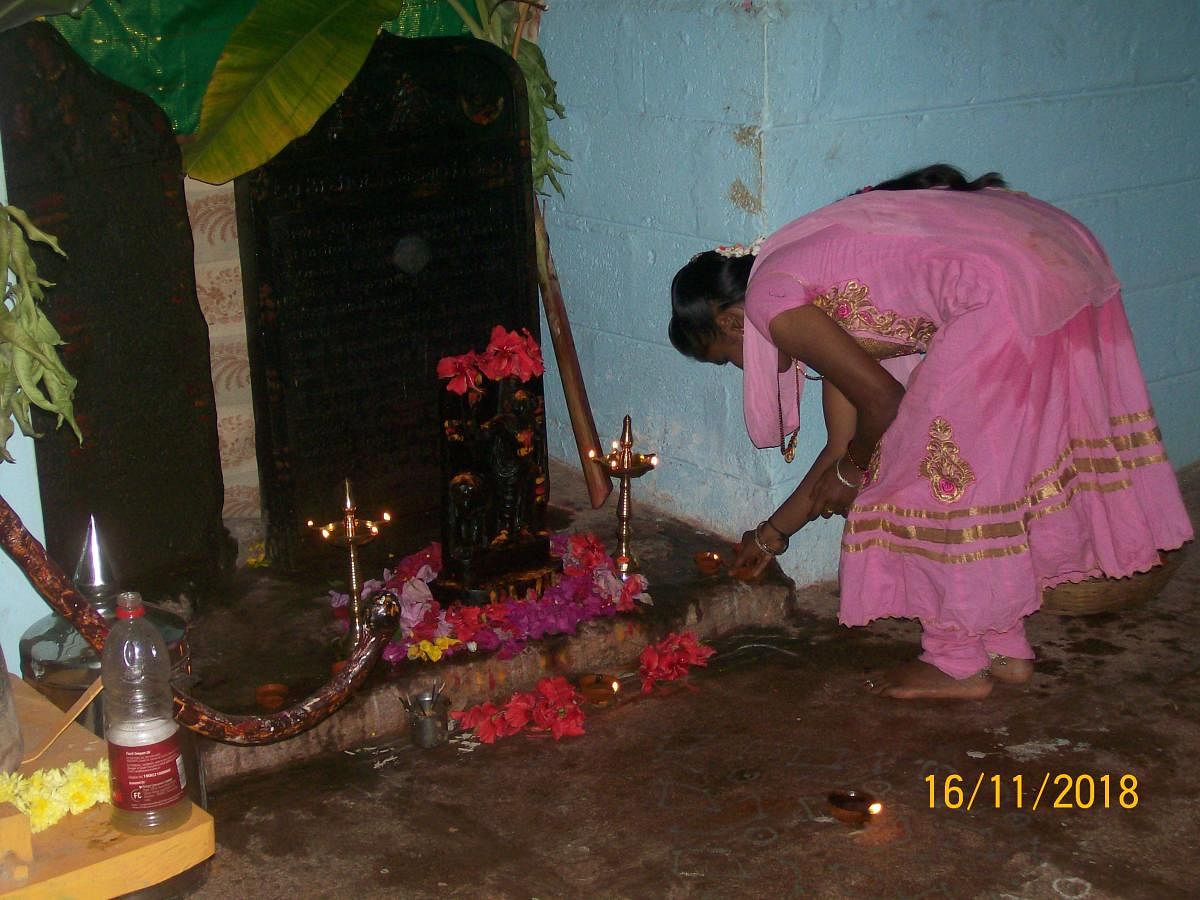
If you happen to visit K Hemmanahalli, a tiny village situated on the outskirts of Mysuru, on an evening during Kartheeka Masa after Deepavali, you will hear a spectacular group sitting inside Sri
Mahalingeshwara Temple, singing Kunthi pada in chorus. Songs that are usually sung
during Konthi or Kunthi Puja. Kunthi puja is a folk ritual praticed in Mysuru, Mandya and Chamarajanagar districts. This ritual is also been observed in a few parts of Shivamogga, Tumakuru and Bengaluru districts. Konthi puja is predominantly celebrated in Karnataka’s agricultural belt. Villagers believe that Kunthi is the daughter of Mother Earth and thus the celebration is associated with agriculture.
A villager by name Puttathayamma says, “For several decades, we are celebrating this ritual in our village. Our ancestors used to sing these songs and I bequeathed them. This region was ruled by queen Kunthi, hence called ‘Kunthi Rajya’ and Kunthi Puja is offered to her’.
G N Anantha Vardhana, temple secretary, who is behind the revival of the temple and traditional folklore practices in the village, says, “Kunthi is the adopted daughter of king Kunthi Bhoja and according to legends, Kunthi performs Gaja Gowri Vrutha on the advice of Narada Maharshi. To perform this, Arjuna the son of Indra, brings Kamadhenu, Kalpavruksha, fruits and vegetables from heaven as there were no fruits or vegetables seen to be grown on earth. Since Kunthi’s vrutha brought these things to earth, the villagers regard her vrutha and came to worship her in a very auspicious ceremony.”
Folk scholar and a research associate at Mysore University, Kyathanahalli
Ramanna, from his study and research, says, “Its a worship started by Kunthi herself, and villagers continued to celebrate it in the memory of her.” He has even authored a book titled Konthi Pooje Ondu Adyayana.
This ritual is observed during the month of Kartheeka, which is also known as Suggi, the harvest time. Villagers believe that this month is dedicated to Lord Shiva and consider it auspicious. But, there is no uniformity in celebration. In some regions, Kunthi will be worshipped for one day, and in some places three days or even for a month.
Rammanna explains the celebration of Kunthi as follows. Villagers play lagori, a traditional Indian rural game, three days before the commencement of Kunthi puja. Villagers dig a small pit in the ground to play lagori. After that, in the same pit, they keep a stone, which is considered as Kunthi. In many parts, they use a mortar or a pestle as Kunthi. In a few places of Hunsur taluk, the face of Kunthi has been carved on top of a stone. In the absence of a face, the women folk draw the face of Kunthi using oil and flowers.
Generally, this ritual is followed by the Kunthi Pada. These songs describe Kunthi’s childhood, marriage, her children, poverty faced by the Pandava during the exile of the Pandavas), etc. In some places, to avoid monotony, villagers guise themselves in drama costume and entertain.
On the last day, villagers build a mud idol of Kunthi and decorate it with flowers, sari and ornaments. After worshipping her with Kunthi Pada, villagers take Kunthi in a procession and rest her in an avarekai (hyacinth beans) or huruli (horse gram) or uchechellu (niger seeds) field. If it is a stone idol, it will be taken back to their homes.
Villagers believe that avare was a crop of the Pandavas and so, rest Kunthi in avare field as an expression of uniting her with her family and children.
“In a few regions, villagers take a fist of mud from the mud idol and sprinkle it on the field in a belief that the soil turns fertile and yields a good harvest. In this way, Kunthi is identified as the Goddess of Fertility’, says Ramanna.
